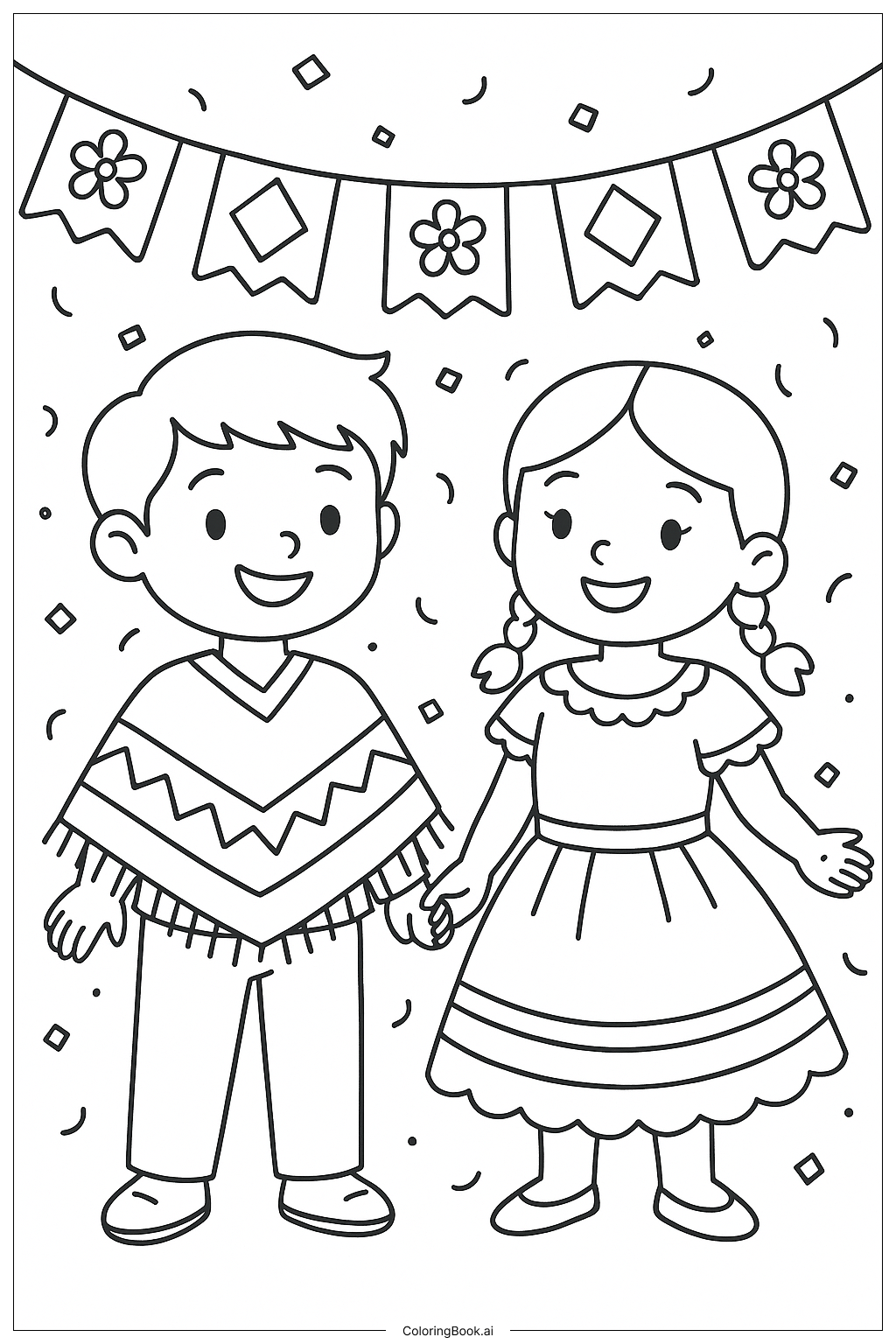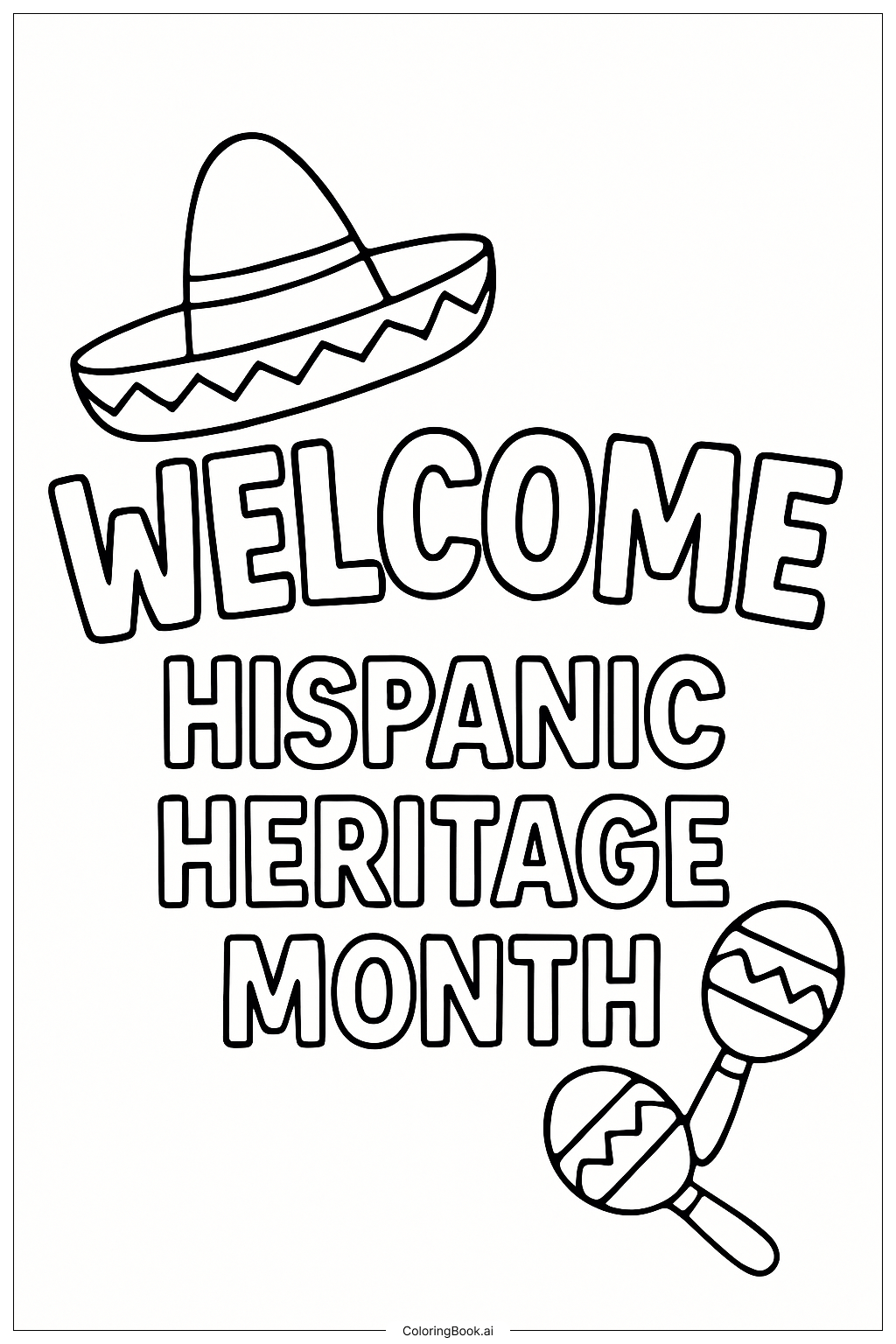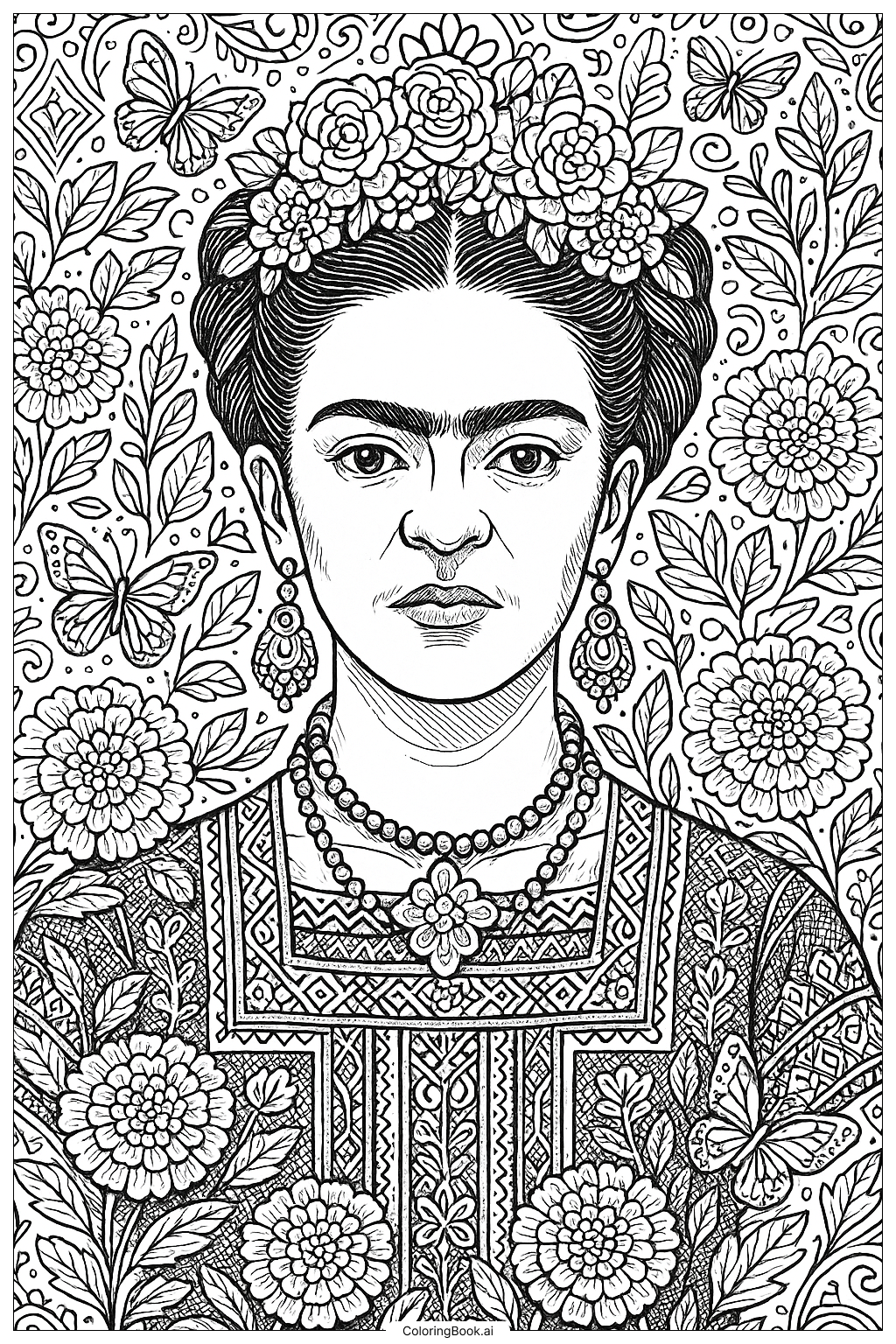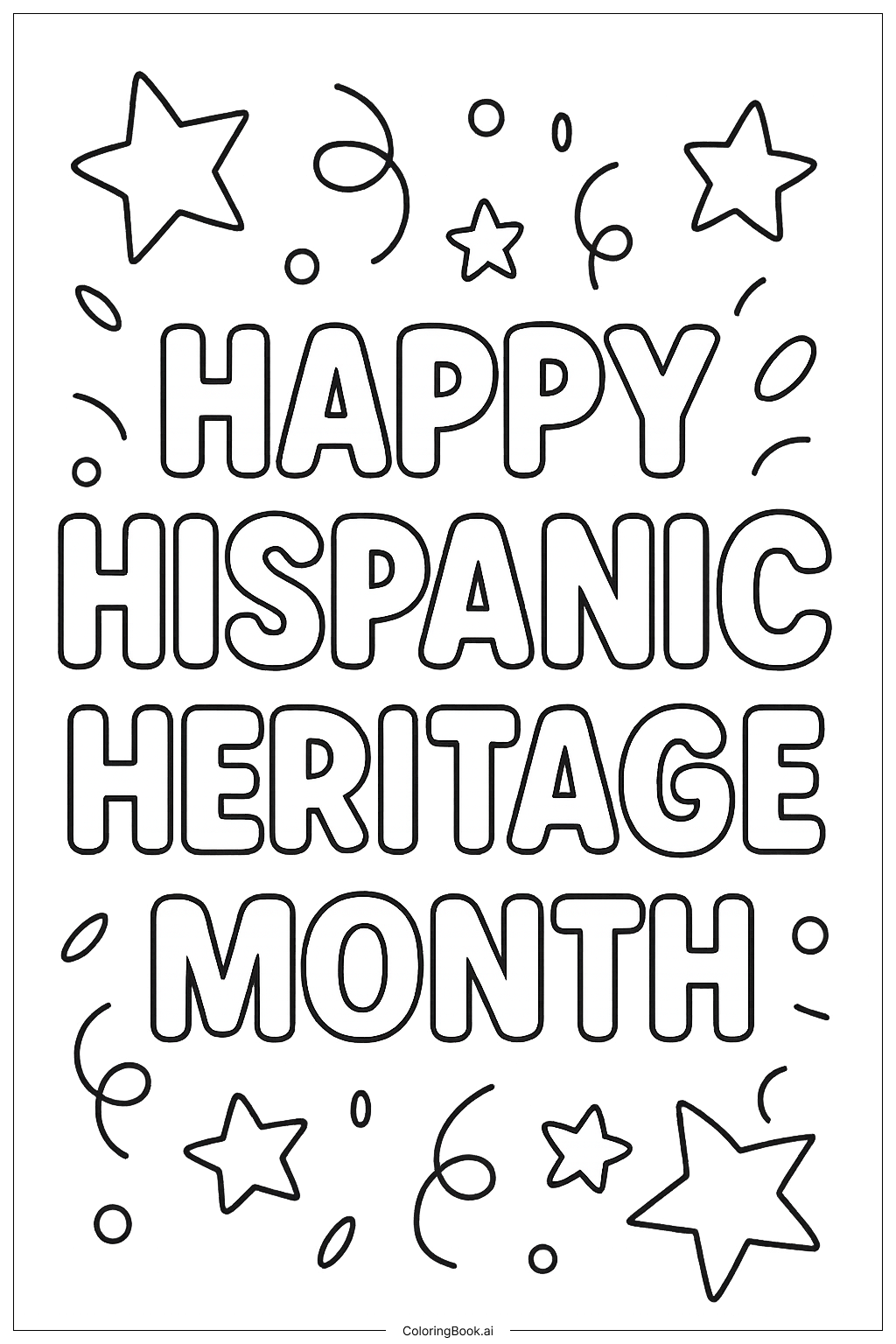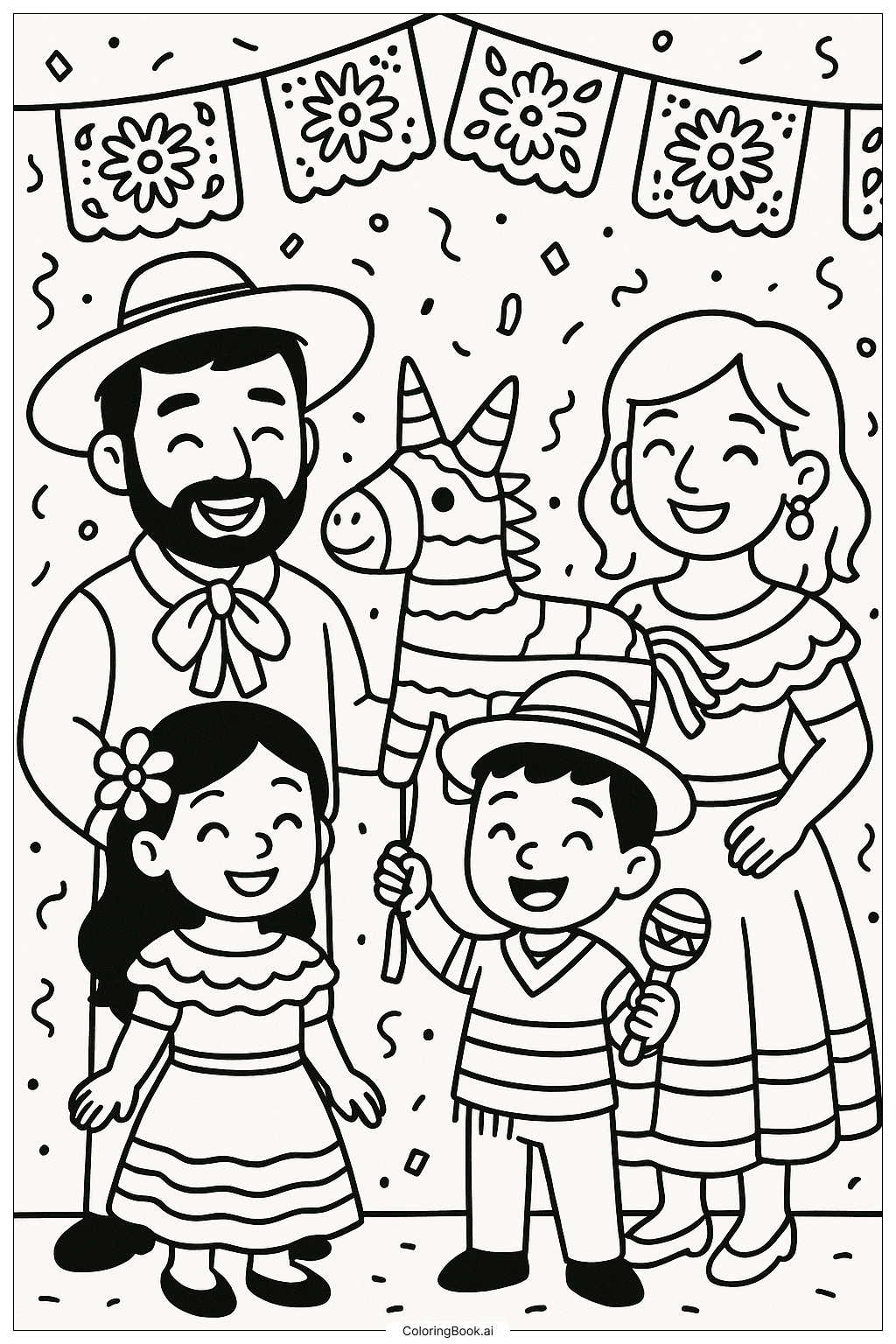Coloring tips: How to color Traditional Clothing For Hispanic Heritage Month coloring page well?
Use bright and bold colors for the clothing to represent the vibrant culture. For the boy’s poncho, try reds, oranges, or yellows with contrasting patterns. The girl’s dress can be colored with shades of pink, purple, or blue and you can add details by using lighter or darker shades to show the dress’s ruffles. For the flags above, use different colors for each flag to make the scene festive. Don’t forget to color the confetti in multiple colors like green, red, or yellow to make it lively. Skin tones can be warm browns or tans. Hair can be dark brown or black to reflect common features in Hispanic culture.
Coloring challenges: Which parts are difficult to color and need attention for Traditional Clothing For Hispanic Heritage Month coloring page?
1. The detailed patterns on the boy’s poncho require careful coloring to stay within the lines and create clear zigzag shapes.
2. The folds and ruffles in the girl’s dress need shading or different colors to show texture, which can be tricky for beginners.
3. Coloring the small confetti pieces and pattern designs on the flags might be difficult because they are tiny and need precision.
4. Maintaining consistent skin tones for both children while using colors that blend well with the clothing can be challenging.
5. Balancing bright colors without making the image too crowded or messy requires thoughtful color choices.
Benefits of coloring books: Advantages of drawing Traditional Clothing For Hispanic Heritage Month coloring page
Coloring this page allows children to learn about Hispanic culture in a fun way. It helps improve their fine motor skills by practicing staying inside the lines, especially with small details. The activity encourages creativity in choosing colors that represent traditional clothing. It also promotes focus and patience as children work on the intricate parts. Through coloring, children can feel proud of showing cultural diversity and tradition.
